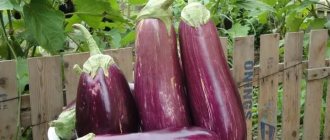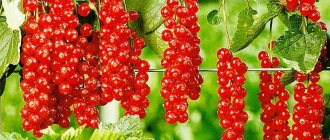When selecting productive cherry varieties for the Moscow region, you need to pay attention to two most important characteristics: the trees’ resistance to frost and to such a dangerous disease for cherries as coccomycosis.
To make it easier for you to decide, we have selected the best varieties that are both highly resistant to frost and coccomycosis. All of them are suitable for growing in the Moscow region.
In cherry varieties, resistance to coccomycosis should be high, since in the Moscow region this disease is quite widespread and sometimes causes serious harm to plants.
Renaissance
It seems as if this variety never gets sick from anything, its immunity is so strong. But Renaissance is famous not only for its good health, but also for its annual and stable yield, thanks to its high winter hardiness. Trees of this variety are distinguished by their moderate growth, large and tasty fruits with dark red skin and juicy, aromatic pulp.
Cherries can be eaten fresh or used for any type of processing. Even if these trees are planted in the country and you rarely visit them, and do not pamper them with care, nothing bad will happen to them, because in addition to all its advantages, this variety is resistant to drought. Well, the fruits will “reach” home without problems, because they are transported well even when fully ripe.
| Entry into fruiting | Tree height (m) | Fruit weight (g) | Harvest | Pollinator varieties |
| For 4-5 years | 2,5-3 | 2,5-3,2 | Early July | Coral, Crystal, Lyubskaya |
Toy
The name reflects the appearance of the fruits - they are so large, expressive, with a uniform color (dark red when fully ripe), that they really look like artificial toy cherries. The tree is also like a toy - neat, with an ideal, spherical crown, but its dimensions are not at all “doll-sized”. The taste of the fruit is excellent, sweet and sour, however, they contain a large amount of sugars.
You can eat the berries straight from the tree, or you can make juice from them, make jam and freeze the cherries for the winter. The undeniable advantages of the variety also include high yield: from an adult tree you can easily collect more than 70 kg (!) of fruit. Alas, the Toy also has a drawback - in particularly harsh winters, the flower buds of the trees may partially freeze, and then the loss of the harvest can reach up to 80%.
| Entry into fruiting | Tree height (m) | Fruit weight (g) | Harvest | Pollinator varieties |
| For 3 years | 2,5-3 | 7,8-8,5 | Early July | Shalunya, Samsonovka and Krupnoplodnaya cherry variety |
The most common cherry diseases
Even with proper planting of cherries and proper care, unfortunately, there remains a risk of disease affecting the garden.
Coccomycosis
The first symptoms of the disease: the appearance of small spots with a pale red color on the foliage. Then they grow together into large clusters and become brown or brown in color. After 50-60 days, the affected leaves fall off the tree, and the period of early leaf fall begins. Fruits are also susceptible to disease. They become deformed, begin to look as if they were baked on one side by the sun, and become unusable.
Moniliosis
The second disease from which cherry orchards suffer greatly. The main signs of the disease: like burnt branches with rotten berries. The fruits become bitter in taste and unsuitable for food. Monilial burn is popularly called gray mold; it is fungal in nature and is transmitted through spores. It spreads quickly in cool weather and high humidity. Trees affected by the disease turn black and dry out, looking like they are burnt.
Coral
This variety has many advantages, but the most important thing is its late flowering, thanks to which the trees are not subject to return frosts and produce a harvest every year. In addition, Coral is winter-hardy and resistant to coccomycosis.
The gardener will be pleased with the oval shape of the crown, the low growth of the tree, thanks to which all the fruits can be collected from a small stepladder, and also the fact that birds are not particularly fond of the berries with a very pleasant taste. This variety simply has no disadvantages, except for its rather poor transport tolerance, but if you grow cherries for yourself, this indicator is not particularly important.
| Entry into fruiting | Tree height (m) | Fruit weight (g) | Harvest | Pollinator varieties |
| For 3 years | 2,5-3 | 4,5-5,5 | Late July – early August | Izobilnaya, Gnomik, Alatyrskaya |
The best varieties of cherries for the Leningrad region
It's hard to grow cherries in the Northwest. But every year new varieties appear - this region is densely populated, fruit crops are in demand. In the Leningrad region you can grow:
- Altai Swallow;
- Bessey;
- Vladimirskaya;
- Zherdyaevskaya Beauty;
- Desired;
- Star;
- Lyubskaya;
- Morozovka;
- Shubinka;
- Ural Ruby.
Crystal
Another very interesting variety that does not freeze even in the harshest winters and does not suffer from coccomycosis. It can be placed even in small areas, because trees of this variety are compact with a pyramidal crown that will not provide much shade. Crystal's berries are sour-sweet and very good for processing. The trees are not afraid of drought, and the fruits are well transported. The disadvantages of the variety include only average resistance to moniliosis.
| Entry into fruiting | Tree height (m) | Fruit weight (g) | Harvest | Pollinator varieties |
| For 3-4 years | 2,8-3,2 | 4,8-5,7 | Beginning – mid-July | Coral, Crystal, Lyubskaya |
The best varieties of cherries for the middle zone and Chernozem region
Cherries feel comfortable in central Russia. It grows well in black soil at moderate temperatures throughout the year. You should pay attention to the varieties:
- Anthracite;
- Bystrinka;
- Vladimirskaya;
- Griot Moscow;
- Dessert Morozova;
- Zherdeevskaya Beauty;
- Zhukovskaya;
- Zhyvitsa;
- Igritskaya;
- Lebedyanskaya;
- Robin;
- Morozovka;
- Novella;
- In memory of Mashkin;
- Gift for Teachers;
- Podbelskaya;
- Putinka;
- Rossoshanskaya;
- Radonezh;
- Spartan;
- Turgenevka;
- Kharitonovskaya;
- Chereshnevaya;
- Black Large;
- Shubinka;
- Shpanka Bryansk.
Separately, I would like to highlight self-fertile cherry varieties for the middle zone:
- Assol;
- Brunette;
- Bulatnikovskaya;
- Volochaevka;
- Dessert Volzhskaya;
- Drop;
- Lyubskaya;
- Mtsenskaya;
- Youth;
- Mtsenskaya;
- Youth;
- Hope;
- Memory of Enikeev;
- Tamaris;
- Fairy;
- Farmer;
- Chocolate girl.
Lyubskaya
A seasoned variety, proven by time and Russian frosts, which has been pleasing gardeners with annual harvests and delicious fruits for more than five decades. Dark red cherries with tender and juicy pulp cannot be called dessert cherries; they are more suitable for processing, and besides, their mass is not very large. But harvesting is a pleasure - the trees are not tall, the fruits hang for a long time without falling off, and when they are picked, they are easily separated from the stalk.
This is one of the few varieties of cherry whose trees can be used for decorative purposes, because they bloom for more than a week, very lushly and beautifully. In addition, the fruits are very well transported, so you will get the harvest from your dacha to your home completely intact.
| Entry into fruiting | Tree height (m) | Fruit weight (g) | Harvest | Pollinator varieties |
| For 2-3 years | 1,8-2,5 | 3,8-4,0 | Late July – early August | Anadolskaya, Vladimirskaya, Zhukovskaya, Lotovaya, Fertile Michurina, Shpanka early |
The best varieties of cherries for the Urals with photos
The harsh climate of the Urals with uneven distribution of precipitation requires especially careful selection of varieties. We recommend paying attention to the following cherries:
- Altai Swallow;
- Ashinskaya;
- Bessey;
- Biryusinka;
- Bogatyrka;
- Bolotovskaya;
- Brusnitsyna;
- Vladimirskaya;
- Dessert Volzhskaya;
- Lyubskaya;
- Robin;
- Dream of Trans-Urals;
- Mtsenskaya;
- Ob;
- Trinity;
- Ural Ruby;
- Shpanka Shimskaya;
- Generous (Maksimovskaya).
Youth
A more modern variety that appeared on our sites at the end of the last century. It has absorbed many positive qualities, including short stature, a rounded crown with drooping shoots that is convenient for picking fruit, and fairly large dark burgundy berries, very tasty both fresh and in numerous processed products.
In addition, the variety is very productive - from such a low tree you can harvest up to 15 kg of ripe cherries! I would recommend having it on your site not only for residents of the Moscow region, but also for other regions of Russia. The only drawback is that in very wet years, trees can still suffer to a moderate degree from coccomycosis and moniliosis.
| Entry into fruiting | Tree height (m) | Fruit weight (g) | Harvest | Pollinator varieties |
| For 2-3 years | 2,0-2,5 | 4,0-4,5 | End of July | Self-fertile variety that does not require pollinators |
How to choose cherries for the Moscow region
The capital of Russia and surrounding areas are characterized by excessive cloudiness, frequent cyclones, and variable atmospheric circulation. As a result of the moderate Atlantic air masses, the region experiences early or late springs, hot and humid summers, and harsh or warm winters.
Sharp temperature fluctuations, early colds and long winters - all these conditions do not contribute to high yields and rapid ripening of garden crops. Therefore, when purchasing cherry seedlings, it is important to pay attention not only to their quality and freshness, but also to the zoned characteristics.
You will be interested to know which varieties of cherries are best to plant in the Moscow region.
Winter hardiness
Winter frosts in the Moscow region often reach -35… -38°C. And every year in the spring, during the flowering period of garden trees, and until mid-June, the night temperature drops to -2...- 5°C. Such sudden changes and climate instability have a detrimental effect on trees that are sensitive to temperature fluctuations.
Therefore, for gardeners in this area, the cold resistance of seedlings is of fundamental importance. This quality will help the buds that swell during the thaw to survive, and will also protect the flower clusters from the sub-zero spring temperatures.
Disease resistance
Cherry is susceptible to harmful fungal spores, in particular to the causative agents of coccomycosis, anthracnose, moniliosis, rust, scab, hole spot, and root canker. The development of pathogenic microflora is facilitated by the variability of the climate of the Moscow region.
Important! To protect early ripening cherries from spring frosts, it is recommended to delay flowering. To do this, shovel as much snow as possible into the tree trunk holes, compact it and cover it with light material.
In conditions of constant temperature changes, high humidity, cool summers, frosty and snowless winters, it is difficult for gardeners to deal with plant diseases. In addition, often the measures taken do not bring the expected results. Therefore, highly disease-resistant varieties are preferred for this area.
Self-fertility
Self-pollinating varieties do not require additional pollinators and can independently set up to 60% of berries. Yields can be increased by the successful proximity of the crop to cherry blossoms at the same time. If you do not take this criterion into account when choosing seedlings, do not count on a bountiful harvest. Fruiting of self-sterile varieties does not exceed 7% of the total flowering. The rate is slightly higher for partially self-fertile varieties - up to 20%.
Self-fertile cherry flowers have an unusual structure
Productivity
High-yielding varieties of cultivated crops are preferred for any climatic zone. The average yield of one cherry tree ranges from 16 to 30 kg, depending on their size, variety and age. From one hundred square meters, with proper planting planning, you can harvest up to 130 kg, and from a hectare - up to 13 tons. This amount of berries in the Moscow region can be obtained with non-thickened planting, proper pruning and simple feeding of the cherry orchard.
Did you know? Ancient people used cherries to make green food coloring.
.
Tree size
For the Moscow region, low-growing varieties that do not produce abundant crown growth are more suitable. On average, the height of their trunk does not exceed 1.5 m; per year, the side branches grow no more than 2 cm. The length of the leaf cuttings is about 4 cm, and their plates can develop in length up to a maximum of 2.5 cm. The berries of such trees are large: in diameter they reach up to 4-5 cm and weigh about 5 g each.
Ripening time
Among the varietal diversity of cherries in the Moscow region, mid-ripening specimens have proven themselves better. Their vegetative activity begins at a time when spring frosts are no longer a threat.
Did you know? One of the oldest cherries on the planet is a tree growing in Great Britain. It is more than one and a half hundred years old, and its height reaches 13 m
.
Turgenevka
This variety is perfect for lovers of “traditional” cherries. Its trees are medium-sized with a crown of medium density. This means that approximately once every 2-3 years you will have to carry out sanitary pruning, otherwise the crown may thicken and yields may decrease.
The fruits of the variety will also appeal to all those who love the cherry taste; they are moderately sweet with a pronounced sourness, perfect for jams and compotes. The undoubted advantages of the variety include its resistance to moniliosis and coccomycosis, high winter hardiness and drought resistance, as well as sufficient yield. Alas, there is also a drawback - in particularly harsh winters, flower buds may freeze, which reduces yields by 35-40%.
| Entry into fruiting | Tree height (m) | Fruit weight (g) | Harvest | Pollinator varieties |
| For 5th year | 2,5-3,0 | 4,8-5,0 | Beginning – mid-July | Self-fertile, but for better pollination you can plant the Vladimirskaya variety nearby |
The varieties discussed below have more tasty fruits, but they are slightly less winter-hardy than the previous ones. They are suitable for the southern regions of the Moscow region.
Varieties by type
The climate of the Moscow region allows for the cultivation of different varieties, however, all cherry trees can be divided into the following several groups:
- the most common;
- early ripening;
- frost-resistant;
- dwarf.
Each group has several varieties that are especially popular among gardeners. This may be due to particularly tasty fruits, high yields or good resistance to various diseases.
Some cherries do not require complex care, and the low tree allows you to harvest without difficulty.
The most common
The Moscow region, like any large region, has its own northern and southern regions, in which proven varieties are grown. At the same time, among the variety of cherries, there are those that have proven themselves well anywhere in the Moscow region.
Lyubskaya
This cherry is considered one of the oldest species known to Russian gardeners. It is widespread throughout the central part of the country. The trunk is not too tall and has a height of up to 2.5 meters. Lyubskaya is distinguished by large berries of a deep burgundy color, the weight of which can reach 4 grams. The pulp has an abundance of juice and a sweet and sour taste and is slightly tart. Cherries are partially self-fertile, so regardless of the presence of other varieties, the fruit will set. The first harvest can be harvested after 2-3 years. The fruits reach consumer ripeness at the end of July or beginning of August. Cherry is characterized by high and stable productivity, which progresses over the years. You can collect up to 25 kg of berries from one tree, and gardeners in the southern regions get up to 35 kg from one cherry
Turgenevka
Turgenevskaya cherry was bred in 1979 by employees of the All-Russian Research Institute of Fruit Crop Breeding. The tree is medium-sized, up to 3-3.5 meters high. The crown is quite dense and looks like an inverted pyramid. The bark is smooth brown. Flowering begins in mid-May and can last up to 10 days. Fruiting occurs in 4-5 years. Full ripening of the fruits greatly depends on the climatic conditions of the region, but usually occurs in the second half of July. Turgenevskaya is very well cultivated throughout the Moscow region. The berries are dark red in color and large in size. Some fruits can reach a weight of 5 grams. The taste is sweet and sour with a low sugar content, so the fruits of this variety are well suited for home canning.
The variety is partially self-fertile, so to obtain high yields it is recommended to plant cherry varieties such as Lyubskaya, Favorit or Molodezhnaya nearby.
Vladimirskaya
Vladimir cherry is an old Russian variety known since the 12th century, when it was grown in monasteries. The plant forms a kind of bush and can reach a height of up to 5 meters. The crown has a round shape with an abundance of leaves on the periphery, while in the center there is not too much foliage. With age, the branches begin to sag, and the crown becomes somewhat weeping. Vladimirskaya is self-sterile and requires pollinator trees, which experienced gardeners select very carefully. The following types are well suited for this purpose:
- pink amorelle;
- fertile Michurina;
- Vasilievskaya;
- Griot Moscow.
The fruits of the Vladimir cherry are not too large, and reach a weight of 3.5 grams. The skin is dark red in color, and the flesh is juicy, sweet and sour, but with a predominance of sour.
Fruiting is of the traditional bush type, when up to 85% of the ovary is located on annual branches. The yield is average and does not exceed 20-25 kg per tree.
The berries are fully ripe by mid-July, and they should be collected immediately, as due to the weak stalk the crop can quickly crumble.
Early ripening
Many gardeners prefer to plant early ripening cherries. This may be due to the instability of the region's climatic conditions. Some high-yielding varieties are popular in the Moscow region.
Shpanka
Shpanka cherry is a so-called duk. This is a hybrid of cherry and cherry. The origin of this variety is difficult to trace, since it has been widespread in the middle zone for more than 200 years. This is a strong and tall tree that can reach a height of 5-6 meters. The abundant and dense crown has the shape of a ball, and the branches grow almost horizontally. The variety begins to bear fruit early and can be harvested from the end of June. The fruits ripen very unevenly, so the harvest takes a long time. Harvesting must be done quickly, as the berries ripen, since due to the weak stalk the fruits easily fall to the ground. Active fruiting begins in the fifth year after planting. The berries are large, juicy and sweet and sour.
In poor soils, the harvest will be smaller and of poorer quality. Shpanka is self-fertile, and even when grown alone, it produces a harvest. Read the description of the Shpanka cherry variety here.
The Shpanka cherry variety ages quickly and after 12-15 years fruiting almost completely stops.
Chereshnevaya
This cherry is also a hybrid of the sour cherry. The tree reaches medium height and has a pyramidal and fairly spreading crown. Cherry cherry is distinguished by good frost resistance, so it can be grown in the northern regions of the Moscow region. The berry is not too large with a bright red skin and sweet pulp. The most important thing when planting cherry seedlings is the correct choice of location and soil, since the variety is very sensitive to these factors. Hybrids of cherries and cherries do not like bright sun. The soil must be loose so that moisture and air can easily penetrate the root system. The pH value should be at (pH 7).
Harvesting begins in the third year after planting in the ground. The yield is average and rarely exceeds 15 kg of berries from one tree.
When purchasing hybrid seedlings, you should not buy those that say “cherry-cherry.” The name of the variety must be indicated.
Bagryannaya
Bagryanaya cherry is a promising hybrid obtained by crossing the Vladimirskaya and Shubinka varieties. The variety is included in the State Register as recommended for the Central region. The tree is low-growing with a round crown and abundant foliage. Flowering begins early. In good weather conditions this could be the end of April or the beginning of May. In the last ten days of June you can harvest. The berries are large, weighing over three grams. They are distinguished by their dark red color, sweet and sour taste and very dense pulp. Crimson has good frost resistance characteristics. Despite good resistance to fungal diseases, regular preventive treatment is required. Shubinka or Griot Moskovsky can be used as pollinator varieties.
This link will tell you what you can plant next to cherries.
Frost-resistant
In the Moscow region there are northern regions where it is not always possible to grow popular and high-yielding varieties of cherries. Therefore, among the variety of cherries, there are special frost-resistant varieties that tolerate not only prolonged frosts, but also spring frosts that are dangerous for fruiting.
Youth
Hybrid Molodezhnaya is a bush variety of cherry. The stems reach a height of 2-2.5 meters and begin to bear fruit in the third or fourth year. With good care, the fruiting period can last up to 15-20 years. The productivity of cherries is quite high and you can collect up to 15 kg of delicious berries from one tree. Fruiting begins in mid-July and can continue until the end of the month or until early August. The fruits weigh 4.5 grams and are distinguished by great juiciness and sour taste. Molodezhnaya is a self-fertile plant, but due to the high probability of pollen death from low temperatures, other varieties with close flowering periods should be planted in one area. For this purpose, you can use Lyubskaya, Morozovka, Turgenevka cherries.
Youth is not resistant to moniliosis and coccomycosis, so it requires constant prevention and treatment with recommended drugs.
Shubinka
Shubinka cherry is one of the ancient Russian varieties. It has been grown in the central regions of Russia since the 19th century. The tree is quite tall and can reach a height of more than 4 meters. The crown has a pyramidal shape and is not too dense. Shubinka berries are small, dark red in color, and weigh from 2 to 2.5 grams. Due to the low sugar content, the fruit pulp is very acidic, so the berries are almost never used fresh, but are processed. Shubinka is a late ripening variety. Harvesting begins in early August and can continue until the end of September. The berries have a strong stalk, so they stay firmly on the branches. The longer the cherries hang on the tree, the tastier they become as they pick up more sugar. From one tree you can collect 15-22 kg of berries.
Also read about Shubinka cherries here.
The variety is partially self-fertile, so cherries such as Lyubskaya, Shirpotreb black or Moskovsky griot should be planted near Shubinka. Experienced gardeners recommend planting at least three pollinating varieties.
Robin
This plant is very popular among gardeners in the central regions of the country. The trunk grows to a height of 3-3.5 meters. Fruit formation usually occurs on last year's growths. The berries reach consumer ripeness by the end of July. Cherry productivity is high, but largely depends on weather conditions. The plant can withstand frost well, but if frost occurs while the buds are growing, most of them may die. Since the variety is self-sterile, Vladimirskaya, Shubinka or Lyubskaya cherries should be planted next to it. The advantage of Malinovka cherry is its very high resistance to coccomycosis.
Read about measures to combat cherry coccomycosis in this article.
The berries weigh up to 4 grams, are bright red in color with a sweet and sour taste. Most often, the berries are used for home processing.
To plant this variety, you should choose loose sandy loam or loamy soil. Closely located groundwater can damage the plant's horse system.
Dwarf
Dwarf varieties are very convenient for growing in individual plots. Its short stature makes it easy to care for fruit crops and easy to harvest.
Tamaris
This low-growing variety can be grown in all areas of the Moscow region. The tree grows only up to 2.5 meters, so caring for and harvesting cherries is not a problem. The crown has a rounded shape of medium density. Fruit formation occurs on bouquet branches. The berry is large, dark burgundy in color, and has a very sweet taste due to its high sugar content. Tamaris blooms late, and the fruits can be collected starting in late July. Cherries withstand cold winters with prolonged frosts well. The tree requires preventive measures against fungal diseases.
Read the description of the Tamaris cherry variety here.
Tamaris is a self-fertile variety, but to increase productivity, Turgenevka or Zhukovskaya cherries can be planted next to it.
Rusinka
Cherry Rusinka is zoned for the Central region, which includes the Moscow region. This is a dwarf variety, the trunk of which does not exceed 2 meters in height. The crown is round in shape, the branches of which sag slightly. The shoots grow almost horizontally, which can cause damage during large harvests. The berry weighs 3.5 grams and has a bright red color and sour taste, so it is rarely consumed fresh. Cherry blossoms in mid-May, and fruiting occurs in the second decade of July. The fruiting cycle continues for a long time, so harvesting is delayed. A normal harvest can be harvested 3 years after planting. Cherry is winter-hardy and high-yielding. Rusinka tolerates hot weather and drought quite well. Resistance to fungal diseases is above average.
Bystrinka
This cherry is very popular among gardeners. Bystrinka is distinguished by its unpretentiousness and high winter hardiness. The trunk does not grow higher than 2-2.5 meters. This promising hybrid was obtained by crossing two productive varieties, so the tree is characterized by high productivity. From one tree you can collect more than 20 kg of berries. To regularly obtain a bountiful harvest, pollinator trees need to be planted on the site, coinciding with Bystrinka in flowering time. The fruits have an average size and weight up to 4.5 grams. The color of the fruit is dark burgundy, and the pulp is tender with a sweet and sour taste.
The plant begins to bear fruit three years after planting. Since cherries are partially self-fertile, with good care you can count on a small harvest.
Bystrinka should not be planted in acidic soils, as it will develop poorly and may die.
Memory of Enikeev
This variety has average winter hardiness, so it is best to grow such trees in regions with moderately cold winters. But the variety also has many advantages: it is self-fertile, and you will not need to plant other varieties for pollination, it quickly begins to bear fruit and is characterized by stable yields. But the most important thing is its fruits.
They are large, with a small stone, dark red in color and have a surprisingly pleasant, harmonious taste. These cherries are pleasant to enjoy fresh; they are also suitable for all types of processing without exception. In addition, the variety is heat- and drought-resistant, which is especially important for summer residents who do not visit their plots often.
| Entry into fruiting | Tree height (m) | Fruit weight (g) | Harvest | Pollinator varieties |
| For 3-4 years | 2,5-2,8 | 4,3-4,6 | Beginning – mid-July | Self-fertile |
Cherry varieties for Siberia
Only varieties of medium and late ripening are suitable for cultivation in Siberia. Most often, steppe cherry cultivars are planted there, which better withstand the vagaries of changeable weather. It is worth paying attention to Bessey (sand). Unfortunately, in Russia they still pay little attention to this cherry, and the North American varieties have not been tested here.
The following are grown in Siberia:
- Altai Swallow;
- Bessey;
- Biryusinka;
- Vladimirskaya;
- Zherdyaevskaya Beauty;
- Desired;
- Lyubskaya;
- Ob;
- Ural Ruby;
- Shubinka;
- Chocolate girl;
- Shpanka Shimskaya;
- Generous (Maksimovskaya).
Comment! Varieties of common cherries in Siberia are grown as stanza (cover crop).
Rastorguevskaya
A modern variety bred at the beginning of the 21st century. This means that breeders have corrected previous mistakes and obtained new results. Many people consider this variety to be the standard, although it has some disadvantages - moderate winter hardiness and susceptibility to coccomycosis (in especially wet years). However, the Rastorguevskaya cherry has much more advantages: it quickly begins to bear fruit, self-fertility (the ability of trees to set fruit without pollen of other varieties), and the excellent taste of large berries.
Juicy, dark red fruits, suitable both as a dessert and for any type of processing, as well as the low growth of the trees, make this variety one of the most beloved and desired in most of Russia.
| Entry into fruiting | Tree height (m) | Fruit weight (g) | Harvest | Pollinator varieties |
| For 3 years | 2,5-2,7 | 4,0-4,1 | Beginning – mid-July | Self-fertile |
In conclusion, I would like to remind all gardeners that it is advisable to plant stone fruit crops, which include cherries, in the spring, so the risk of freezing of still immature trees is minimized. But it is better to buy seedlings not only of the above varieties, but also of any others, in the fall, because the choice of seedlings is greater and the quality of the planting material is better.
Causes of cherry moniliosis
Moniliosis in cherries appears during flowering, since the fungus Monilia enters the tree through the pistils and from there begins its atrocities. The fungus is spread in damp, cold weather (0.5 to 1.5 degrees below zero Celsius) by the wind. First, the flowers are affected, then the branches, which become brittle, crack and grayish-white growths form in them. The bark of the tree also becomes covered with a gray coating, and if nothing is done, the grown fruits also rot and fall off over time. If nothing is done to combat this scourge, the cherry tree may even die.
Monilia fungus enters the tree through the pistils
Thus, the main cause of the disease is weather conditions, but there is also a problem in the connivance of gardeners. Some people think that with temperature changes, the appearance of rot on cherries and various types of growths is normal. However, all this suggests that the tree urgently needs help, and it is necessary to begin the fight against fungi.

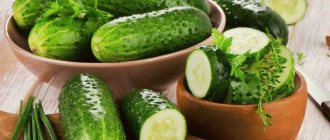
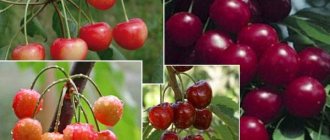
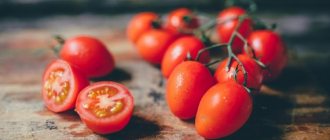
![Tinkoff (Debit card) [CPS] RU](https://adzumi-sushi.ru/wp-content/uploads/tinkoff-debetovaya-karta-cps-ru41-330x140.jpg)



